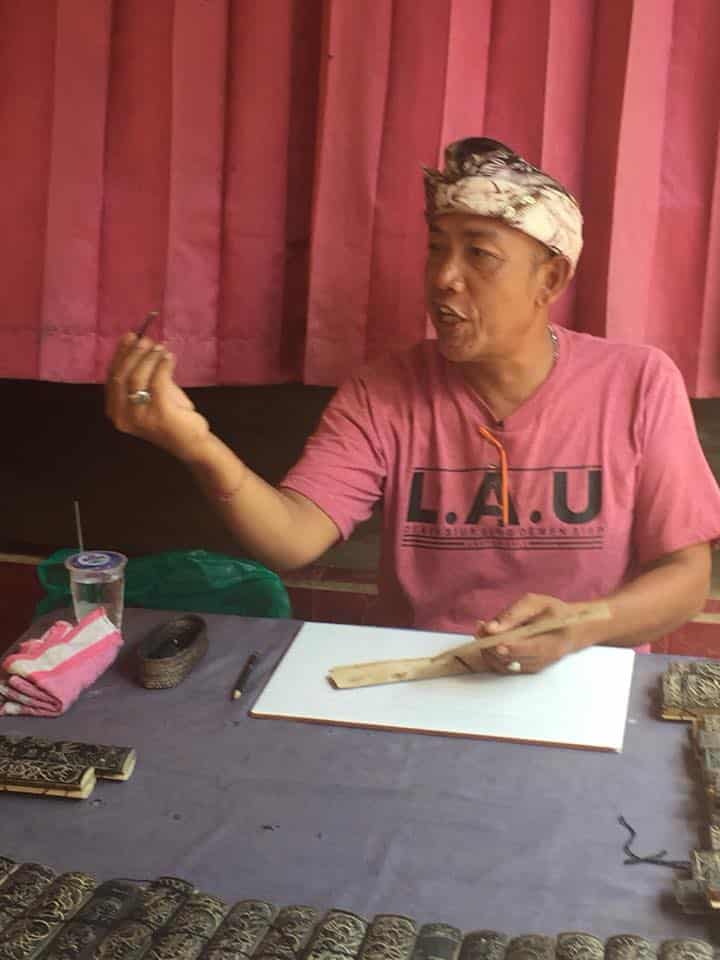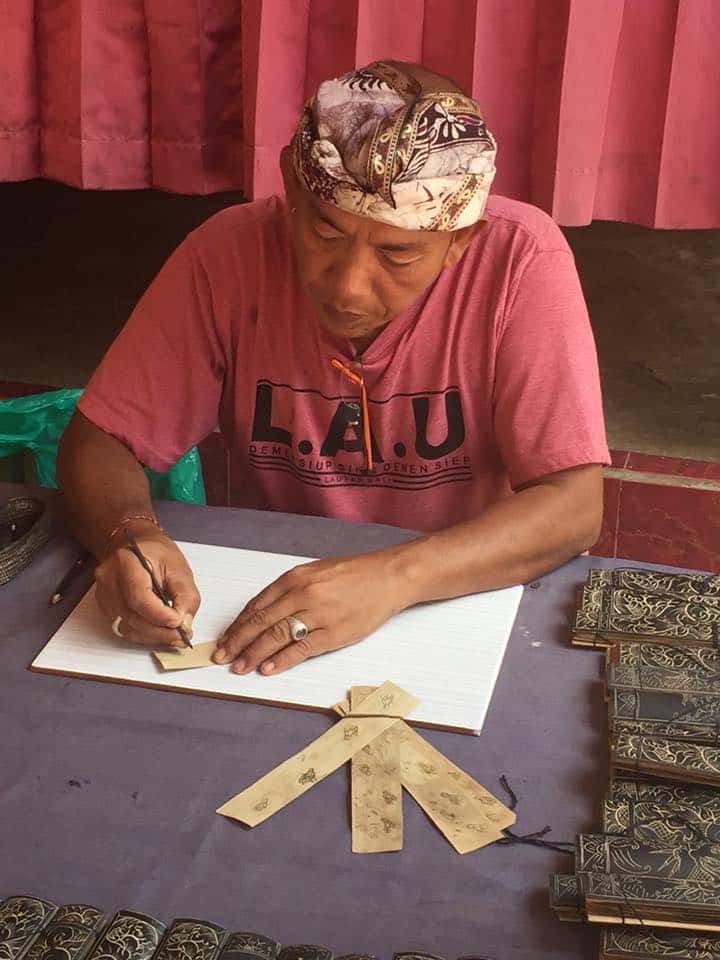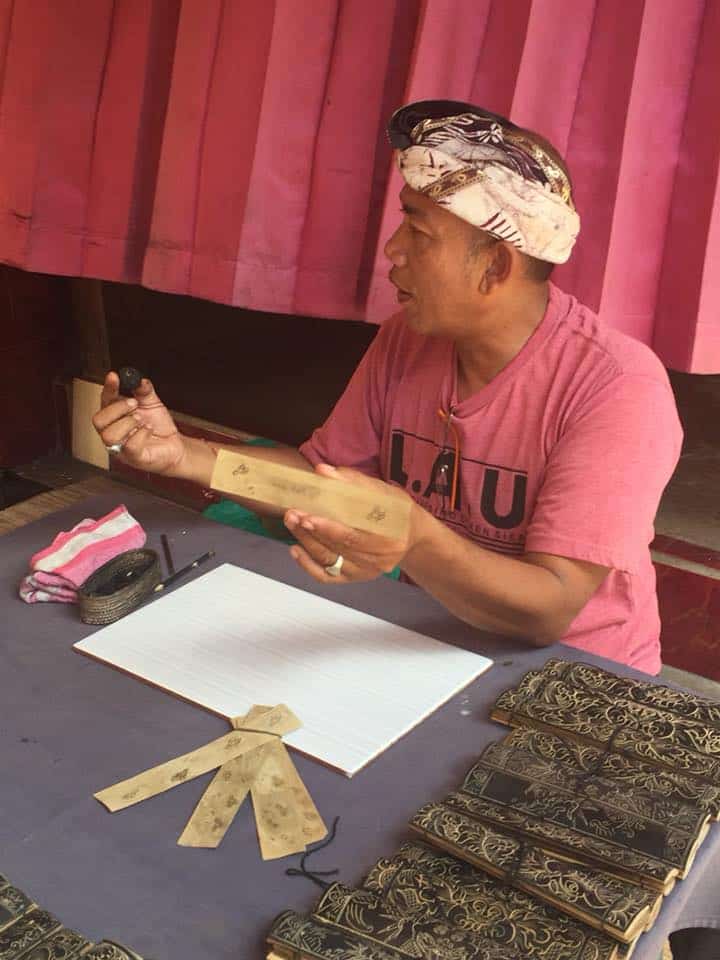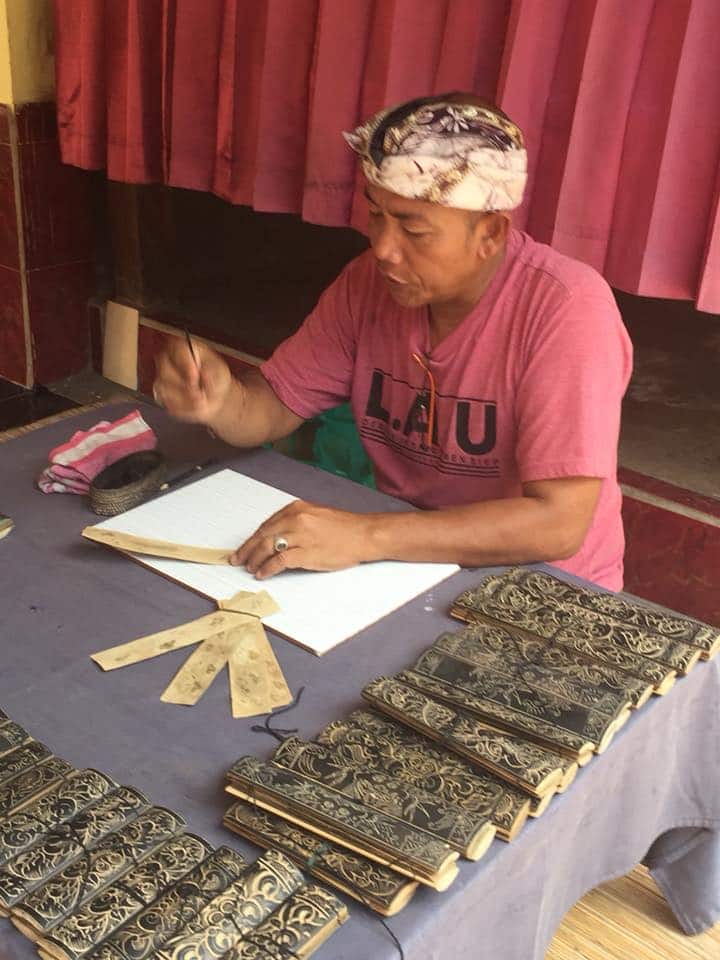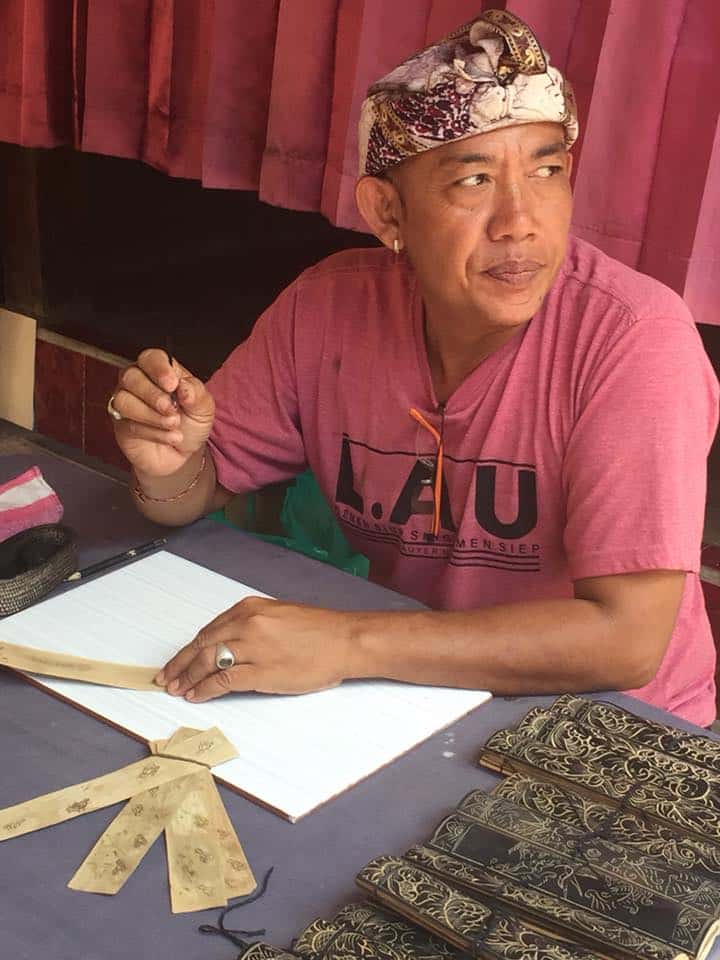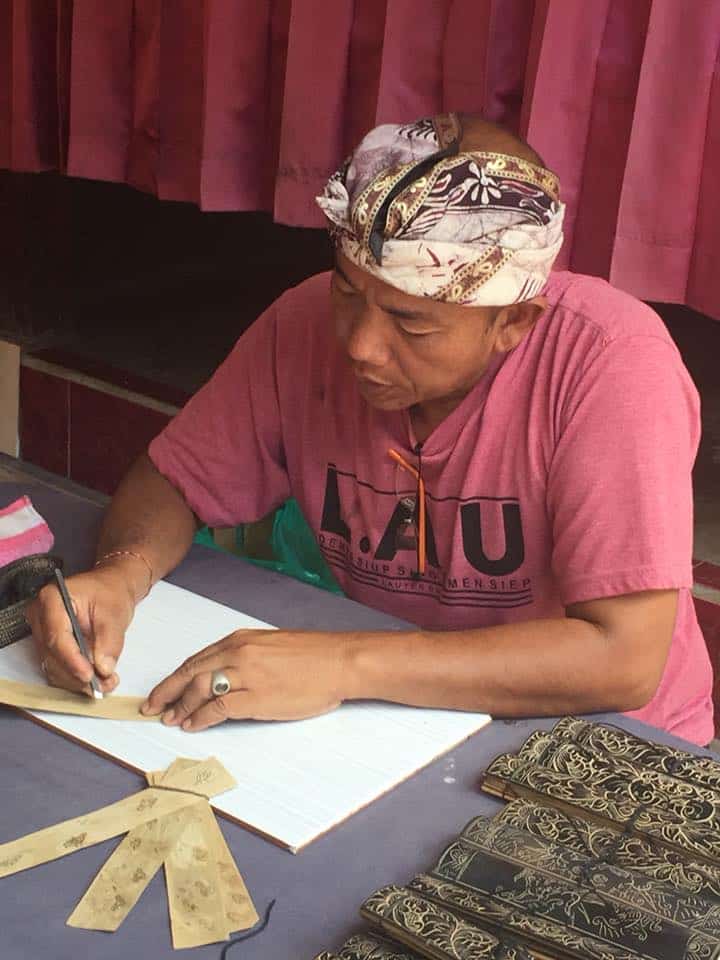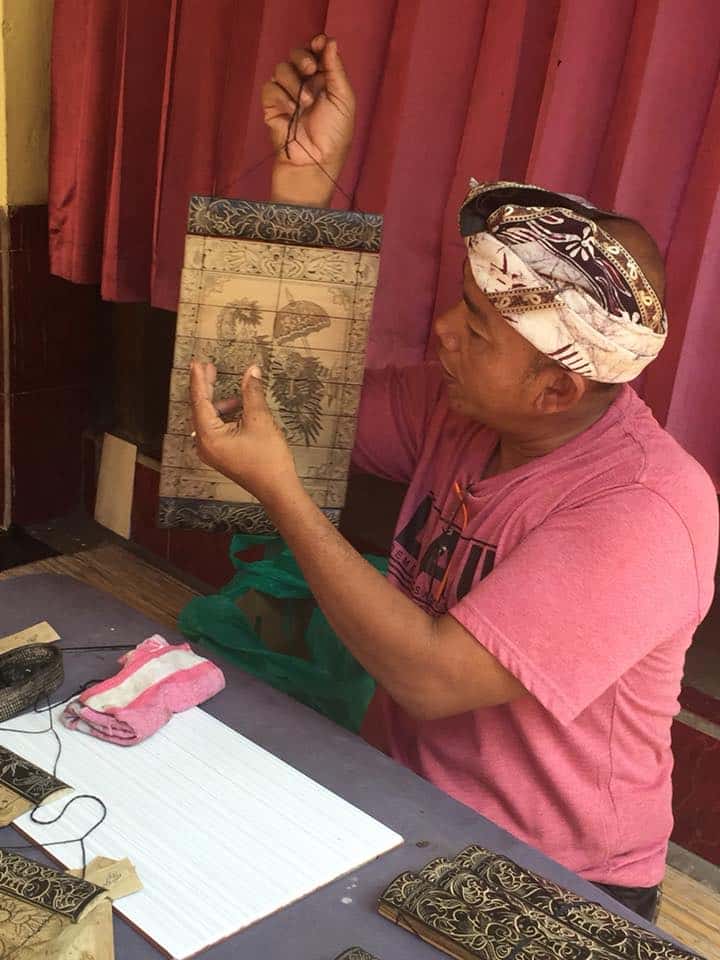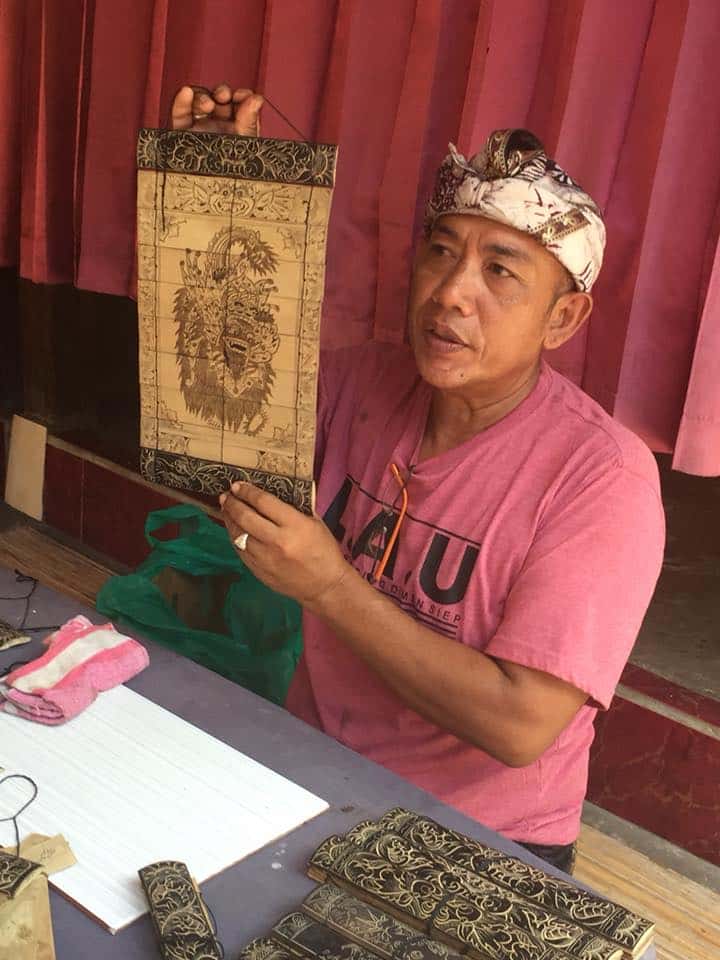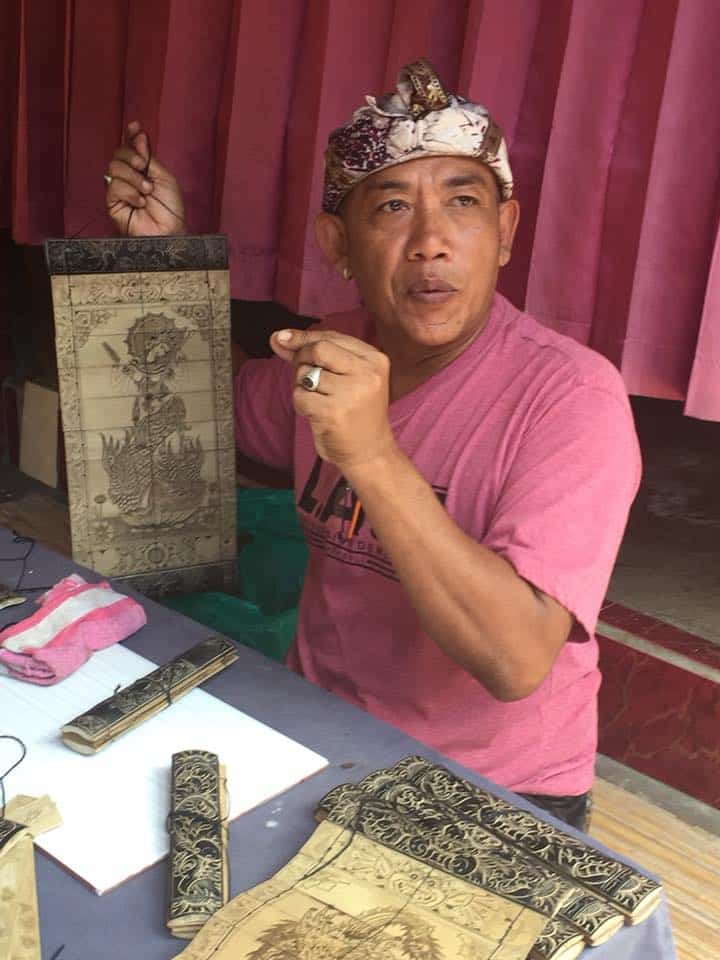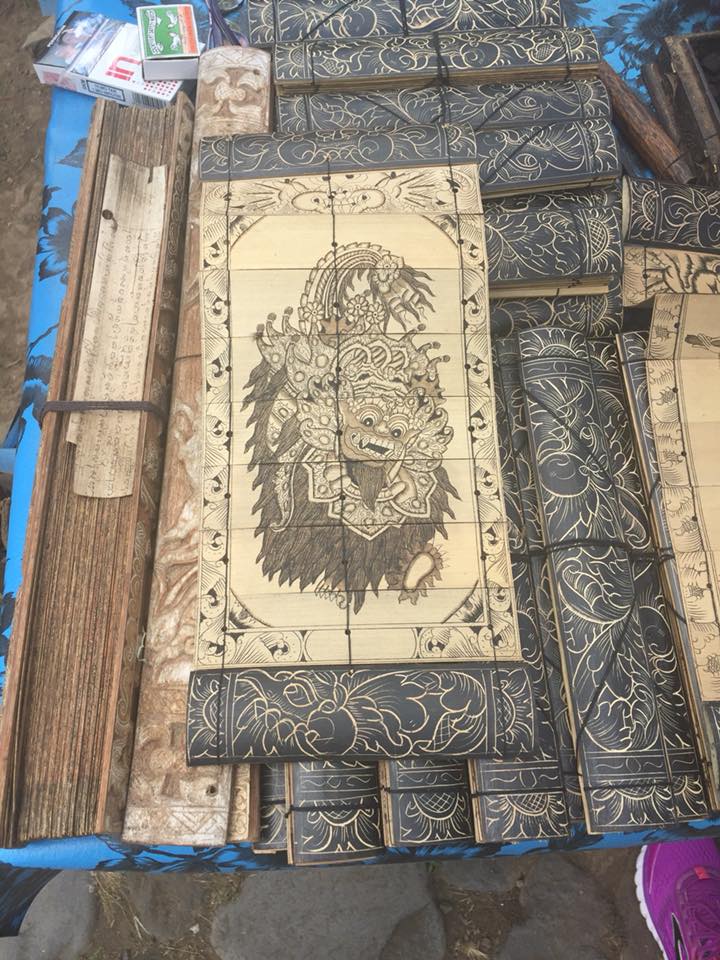Today we hiked three miles to Tenganan Village, one of the most ancient villages in Bali—dating back to the 7th century—and also one of the wealthiest. Tenganan is a village enclosed by four walls and four gates and its residents are not allowed to intermarry outside the village. Tenganan is primarily know for two things: this mecaré care, an annual coming of age ritual for boys, and for its fine crafts: double-ikat weaving, hand-painted eggs, and hand-etched lontar books.
Lontar books are hand etched on palm leaves with a special knife and they’re considered sacred to Balinese. There is a ritual both to carving lontar books and reading them out loud. Lontar books predated paper and they are used to record a variety of things including: history, religious texts, medicine, sacred drawings, language, names of ancestors, songs, love potions, history, black magic and taxation records.
Creating lontar books is a fine art. The knife is held stationary and the leaf is moved to carve each letter or line. Palm leaf books with writing are called lontar, those that are primarily images are called prasi. Text in these books is written in Kawi, an old Javanese language based on Sanksrit.
Everything written in a lontar book always begins with a prayer: “May there be no hindrances.”
Fortunately for the Balinese, the art of creating these books is still taught in school, so it is not a dying art, but very much a living one. There are contests at the high school level for the most beautiful lontar books. It’s the beauty of the writing and the calligraphy has kept this art form alive despite the proliferation of digital media.
In fact, at the Center for the Study of Balinese Culture, 5000 ancient lontar books have been digitalized and can now be downloaded as a PDF. Ancient Balinese writing has made it into the 21st century.
Today, we had the honor to sit with a fine craftsman of this art form, calligrapher Ketut Murti. Take a look in the images below of his fine work:
